Key Takeaways
1. Embrace uncertainty in change management
"Try as you may, change cannot be controlled"
Change is messy. Traditional change management approaches often fail because they assume change can be planned and controlled. In reality, change is unpredictable and non-linear. Lean Change Management embraces this uncertainty by treating change initiatives as experiments rather than fixed plans.
Adapt and evolve. Instead of creating detailed upfront plans, Lean Change Management uses a cycle of Insights, Options, and Experiments. This allows change agents to continuously learn and adjust their approach based on feedback and results. By accepting that not everything can be known in advance, organizations can be more responsive and effective in implementing change.
2. Collect insights to understand organizational dynamics
"Understand the dynamics of your organization by collecting insights with a variety of tools from different communities"
Multiple perspectives. Lean Change Management emphasizes gathering insights from various sources to understand the current state of the organization. This includes practices like:
- Information radiators (visual management tools)
- Lean Coffee sessions (informal structured discussions)
- Culture hacking (small interventions to expose organizational dynamics)
- Agile retrospectives (team reflection meetings)
Assessment tools. In addition to these practices, change agents can use formal assessment tools like ADKAR®, OCAI Cultural Assessment, and the Schneider Culture Model to gain a deeper understanding of organizational culture and change readiness.
3. Generate options based on collected insights
"Decide on options based on what you learned from collecting insights"
Collaborative ideation. Once insights are gathered, the next step is to generate options for potential changes. This process should involve stakeholders from different levels of the organization to ensure diverse perspectives are considered.
Evaluate and prioritize. Options should be evaluated based on their:
- Cost (effort required)
- Value (expected benefit)
- Level of disruption (potential impact on the organization)
Use visual tools like a cost-value chart to plot options and facilitate discussions about which changes to pursue first.
4. Implement changes as experiments
"Validation in Lean Change Management means confirming that the change you're planning is the right one to focus on for that particular time, before you spend all your time and effort designing a change that is likely to hit a wall of resistance."
Hypothesis-driven approach. Treat changes as experiments with clear hypotheses about expected outcomes. This mindset helps change agents be more open to learning and adjusting their approach based on results.
Validate before scaling. Start with small-scale experiments to test assumptions and gather feedback before implementing changes more broadly. This reduces risk and allows for faster learning and iteration.
5. Use visual tools to plan and communicate change
"The format of your canvas matters less than the conversation that creates it!"
Canvases for clarity. Lean Change Management advocates for using visual planning tools like canvases instead of lengthy documents. Examples include:
- Strategic Change Canvas
- Improvement Canvas
- One-Page Change Plan
Facilitate conversations. These visual tools serve as conversation starters and help align stakeholders around key aspects of the change initiative. They make it easier to communicate complex ideas and track progress over time.
6. Measure progress with leading and lagging indicators
"Separate measurements from diagnostics"
Balanced metrics. Use a combination of qualitative and quantitative measures to track progress:
- Leading indicators: Show progress towards goals (e.g., happiness index, in-process defects)
- Lagging indicators: Measure final outcomes (e.g., customer satisfaction, project success rates)
Team-defined measurements. Encourage teams to define their own metrics that align with overall change objectives. This increases ownership and motivation while providing valuable insights into how the change is progressing at the ground level.
7. Create alignment through co-creation and feedback
"Change goes viral when people start helping other people adjust"
Involve stakeholders. Create alignment by involving people affected by the change in its design. Use tools like the Strategic Change Canvas to facilitate discussions and gather input from various levels of the organization.
Continuous feedback loops. Establish regular feedback mechanisms (e.g., Lean Coffee sessions, retrospectives) to collect insights and adjust the change approach as needed. This helps reduce resistance and increases buy-in.
8. Build a network of change agents
"People have a way of fighting through the pain of change when they want the outcome badly enough"
Expand influence. Identify and empower change agents throughout the organization to help spread and implement changes. This network should include people from various departments and levels.
Support and rotate. Provide training and support to change agents, and consider rotating members periodically to bring fresh perspectives. This approach helps the change "go viral" by leveraging peer influence and distributed ownership.
Last updated:
FAQ
What’s "Lean Change Management: Innovative practices for managing organizational change" by Jason Little about?
- Modern Approach to Change: The book introduces a feedback-driven, non-linear model for managing organizational change, blending ideas from Agile, Lean Startup, neuroscience, psychology, and traditional change management.
- Practical Tools and Stories: It provides real-world stories, especially from a case study called "The Commission," and offers practical tools, frameworks, and practices for change agents.
- Focus on Co-Creation: The core message is that successful change happens when those affected are involved in designing the change, rather than having change imposed on them.
- Emphasis on Experimentation: The book advocates for treating changes as experiments, using hypotheses and measurements to validate what works in a specific organizational context.
Why should I read "Lean Change Management" by Jason Little?
- Real-World Relevance: The book addresses the complexity and unpredictability of organizational change, making it highly relevant for today’s fast-changing business environments.
- Toolkit Expansion: Readers gain a broad toolkit, drawing from multiple disciplines, to manage change more effectively and flexibly.
- Practical, Actionable Advice: It offers actionable practices, templates, and frameworks that can be immediately applied, rather than just theory.
- Challenging Traditional Approaches: The book challenges plan-driven, top-down change management, advocating for feedback, transparency, and adaptability.
What are the key takeaways from "Lean Change Management" by Jason Little?
- Feedback Over Plans: Change is best managed through continuous feedback and adaptation, not rigid plans.
- Involve the People Affected: Co-creation and involvement of those impacted by change reduces resistance and increases success.
- Experimentation Mindset: Treat every change as an experiment—form hypotheses, measure outcomes, and iterate.
- Use Multiple Frameworks: No single model fits all; blend tools and frameworks (like Kotter’s 8 Steps, McKinsey 7S, ADKAR) to suit your context.
What is the Lean Change Management Cycle described by Jason Little?
- Three Main Steps: The cycle consists of Insights (understanding the current state), Options (generating possible actions), and Experiments (testing changes).
- Non-Linear and Iterative: The process is not strictly sequential; you can move between steps as needed based on feedback and learning.
- Sub-Cycle for Experiments: Each experiment involves preparation, introduction, and review, emphasizing validation and learning.
- Continuous Learning: The cycle encourages ongoing sensemaking and adaptation as organizational realities evolve.
How does Jason Little define and use "Experiments" in Lean Change Management?
- Changes as Experiments: All change initiatives are framed as experiments with explicit hypotheses and expected outcomes.
- Hypothesis Template: The book provides a simple template: "We hypothesize by [implementing this change], we will [solve this problem], which will have [these benefits], as measured by [this measurement]."
- Validation Focus: Experiments are validated through both qualitative and quantitative feedback, not just completion of tasks.
- Safe-to-Fail Approach: This mindset makes it acceptable to not know all answers upfront and encourages learning from both successes and failures.
What are the main frameworks and models referenced in "Lean Change Management" by Jason Little?
- Kotter’s 8-Step Change Model: Used as a checklist for key elements in change, not as a strict sequence.
- McKinsey 7S Framework: Helps anticipate ripple effects of changes across interconnected organizational elements.
- ADKAR Model: Used for assessing readiness and progress in individual and organizational change.
- Other Models: The book also references the Satir Change Model, OCAI, Schneider Culture Model, and Force Field Analysis for generating insights.
What practical tools and practices does Jason Little recommend for generating insights in Lean Change Management?
- Information Radiators: Visual tools (like Kanban boards) to make work and progress transparent, fostering trust and conversation.
- Lean Coffee: Informal, participant-driven meetings to surface concerns, ideas, and feedback about change.
- Culture Hacking: Small, targeted interventions to expose and address organizational dysfunctions.
- Agile Retrospectives: Regular reflection sessions to gather feedback and adjust course.
- Force Field Analysis: Mapping driving and restraining forces to understand resistance and support for change.
How does "Lean Change Management" by Jason Little approach resistance to change?
- Resistance as a Symptom: Resistance is seen as a natural, emotional response to uncertainty, not as a problem to be eliminated.
- Involvement Reduces Resistance: Involving people in designing the change helps address their concerns and motivations.
- Feedback Loops: Frequent feedback and open dialogue help surface and address resistance early.
- Understanding Perspectives: The book emphasizes understanding different viewpoints and the underlying reasons for resistance.
How does Jason Little suggest organizations measure the success of change initiatives in Lean Change Management?
- Mix of Measures: Use both qualitative (e.g., feedback, happiness index) and quantitative (e.g., Net Promoter Score, defect rates) indicators.
- Leading and Lagging Indicators: Track early signs of progress (leading) and ultimate outcomes (lagging) to get a full picture.
- Team-Defined Metrics: Encourage teams to define their own relevant measures, increasing ownership and relevance.
- Caution with Measurement: Be careful not to incentivize gaming the system or create fear through measurement.
What is the role of canvases and visual tools in "Lean Change Management" by Jason Little?
- One-Page Planning: Canvases like the Improvement Canvas and One-Page Change Plan help make plans visible, simple, and collaborative.
- Facilitate Conversation: The act of creating and updating canvases fosters alignment and shared understanding.
- Living Documents: Canvases are updated as learning occurs, reflecting the evolving nature of change.
- Encourage Feedback: Posting canvases in visible areas invites ongoing input and engagement from stakeholders.
How does "Lean Change Management" by Jason Little recommend creating alignment and building a change agent network?
- Strategic Change Canvas: Start with a collaborative session to answer key questions about vision, urgency, measures, and support.
- Organizational Alignment: Use facilitated sessions, retrospectives, and Lean Coffee to validate and refine the change strategy with those affected.
- Change Agent Network: Recruit motivated individuals from across the organization to champion and support the change.
- Co-Creation and Ownership: Emphasize that change is more likely to succeed when employees at all levels own and help shape it.
What are the best quotes from "Lean Change Management" by Jason Little and what do they mean?
- "Try as you may, change cannot be controlled." – Highlights the unpredictable, emergent nature of organizational change.
- "People have a way of fighting through the pain of change when they want the outcome badly enough." – Motivation and desire are key drivers for successful change.
- "Lean Change Management moves the slider for managing change from using plan-driven approaches to feedback-driven approaches." – The book’s core philosophy is to prioritize learning and adaptation over rigid planning.
- "If you’re doing change management in your office with the door closed, you’re doing it wrong." – Stresses the importance of transparency, collaboration, and involving others in the change process.
- "A documented, detailed process cannot match the complexity of the human brain!" – Reminds readers that human dynamics are too complex for one-size-fits-all solutions; adaptability is essential.
Review Summary
Lean Change Management receives mostly positive reviews, with an average rating of 4.04 out of 5. Readers appreciate its practical approach, real-world examples, and agile-inspired techniques for managing organizational change. Many find it easy to read and valuable for change agents and Agile coaches. Some criticisms include a lack of depth on certain topics and the book's focus on a single case study. Overall, reviewers recommend it as a useful resource for those involved in organizational change, though experienced practitioners may find less new information.
Similar Books

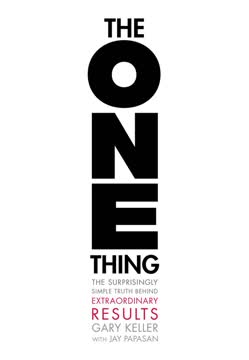
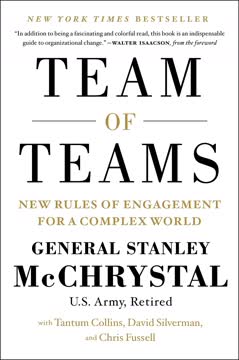
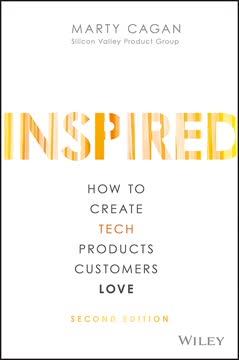
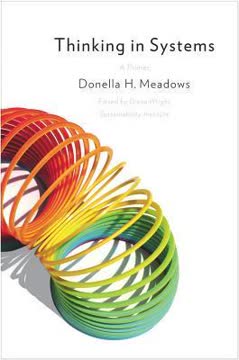



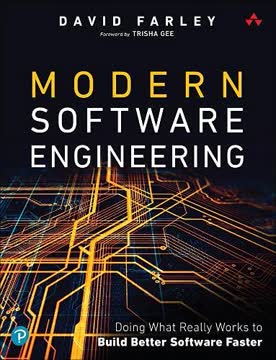

Download PDF
Download EPUB
.epub digital book format is ideal for reading ebooks on phones, tablets, and e-readers.




